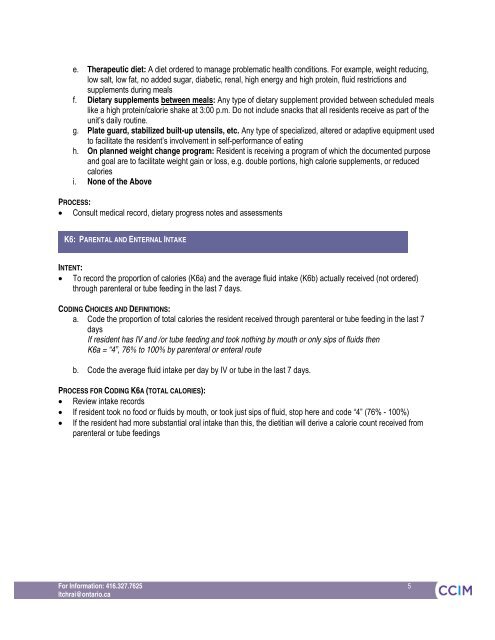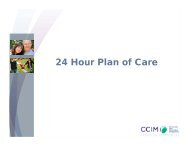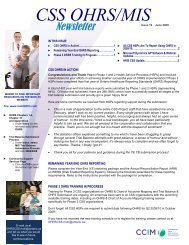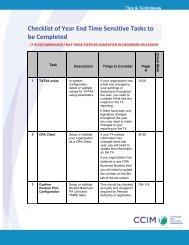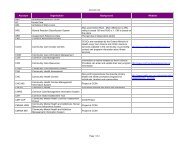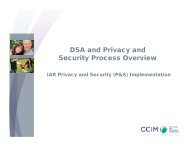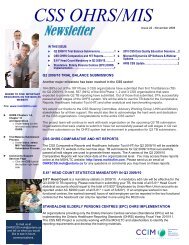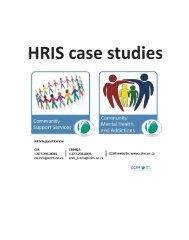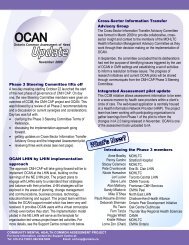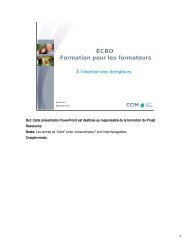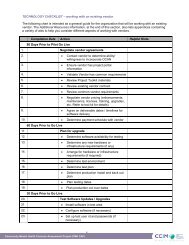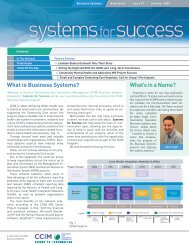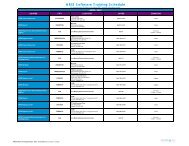RAI-MDS 2.0 Nutritional Care Resource Guide April 2011 - CCIM
RAI-MDS 2.0 Nutritional Care Resource Guide April 2011 - CCIM
RAI-MDS 2.0 Nutritional Care Resource Guide April 2011 - CCIM
- No tags were found...
Create successful ePaper yourself
Turn your PDF publications into a flip-book with our unique Google optimized e-Paper software.
e. Therapeutic diet: A diet ordered to manage problematic health conditions. For example, weight reducing,low salt, low fat, no added sugar, diabetic, renal, high energy and high protein, fluid restrictions andsupplements during mealsf. Dietary supplements between meals: Any type of dietary supplement provided between scheduled mealslike a high protein/calorie shake at 3:00 p.m. Do not include snacks that all residents receive as part of theunit’s daily routine.g. Plate guard, stabilized built-up utensils, etc. Any type of specialized, altered or adaptive equipment usedto facilitate the resident’s involvement in self-performance of eatingh. On planned weight change program: Resident is receiving a program of which the documented purposeand goal are to facilitate weight gain or loss, e.g. double portions, high calorie supplements, or reducedcaloriesi. None of the AbovePROCESS: Consult medical record, dietary progress notes and assessmentsK6: PARENTAL AND ENTERNAL INTAKEINTENT: To record the proportion of calories (K6a) and the average fluid intake (K6b) actually received (not ordered)through parenteral or tube feeding in the last 7 days.CODING CHOICES AND DEFINITIONS:a. Code the proportion of total calories the resident received through parenteral or tube feeding in the last 7daysIf resident has IV and /or tube feeding and took nothing by mouth or only sips of fluids thenK6a = “4”, 76% to 100% by parenteral or enteral routeb. Code the average fluid intake per day by IV or tube in the last 7 days.PROCESS FOR CODING K6A (TOTAL CALORIES): Review intake records If resident took no food or fluids by mouth, or took just sips of fluid, stop here and code “4” (76% - 100%) If the resident had more substantial oral intake than this, the dietitian will derive a calorie count received fromparenteral or tube feedingsFor Information: 416.327.7625 5ltchrai@ontario.ca5


